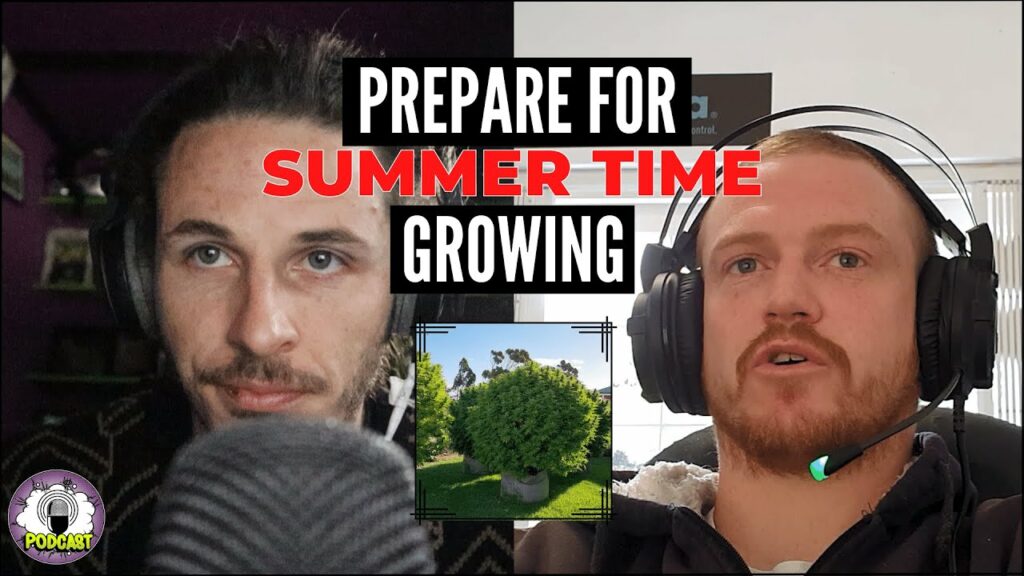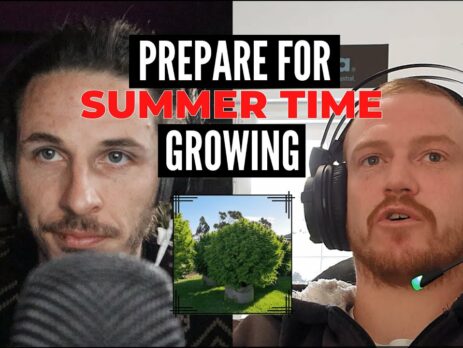Winter Garden Prep: Essential Tips for Next Season
Play the audio, read along or watch the full video on YouTube
Growing season may be over, but that doesn’t mean that the work is done. Today we are going to be chatting about a couple things that you could be doing during this winter period to prepare your grow for the following season. Now, some of you may still be attempting to grow and we have been discussing that and we’ll continue to do so.
But for those of you who just wanna concentrate on those big summit trees, this is definitely an episode for you. We are gonna jump right in with just a little bit about you know, the understanding of your, of your climate. South Africa has various different climates. We’ve got our Mediterranean climate here in the, in the Western Cape.
We’ve also got a more sort of subtropical climate up the up the East coast. So, you know, really, depending on where you are, you’re going to have to adjust your strategy accordingly. But if you are wanting to prepare for the four following season, you know, you’ve just come out of a specific season or summer season, and now you’re looking forward towards the next one.
It’ll be good just to note a couple things maybe while everything’s fresh in your mind as to how the season went. You know, was it incredibly hot and dry? Did you have super high humidity? Did you get sort of late late mold? What happened during the period and what were, what sort of climatic factors affected your, affected your grow?
And this is just gonna better help you understand and plan for the following season. You know growing’s a lot about About improvement and it’s also about sort of keeping track of what’s happened in the past because, you know, six months from now where you get into your next grow, everything’s not gonna be so fresh in your mind.
So if you had a, if you had a really tough year this year on the, on the outdoor, it’s really time just. Now to sit down, maybe enjoy some of the flour, if you did manage to crop some out, and to just write a couple notes related to the season, how it went, what challenges you faced, and set up a little bit of a plan for the following season.
But on that there’s one main preparation which I really like to get stuck into early on, and that’s my soil preparation. So Luke, tell me a little bit about some things we could do to prepare our soil for the following grow season. So if you’re doing a, you know, sort of living soil or, or living bed, you want to curate and get the microbial and the biological activity going in that soil over a long period of time, and then maintain that so, You know, making sure that you are maybe de weeding your cover crops are in and, and growing and you’re maintaining that, you know, you have some sustenance a and growth happening within that soil to keep the microbiology growing as, as well as feeding it.
Whether that be sort of composting that you’re making yourself. Teas Bashi brand tea. You know, it, it, it doesn’t matter what what you’re doing, as long as you’ve got a plan as to how you’re going to re amend that bed or curate it over your sort of off season if you have one. And then, Just understanding that going forward, keeping that microbiology and the the bacterias going alive there is really, really, really what’s going to, to make the difference in, in the next season.
Yeah. Amazing. You know, preparing that soil and just making sure you’re ahead is really going to help because by the time it starts to get warmer, You’re basically wanting to plant and any preparations that would’ve taken a couple months, you know, sort of having to rush and a lot of the time that’s gonna gonna affect us.
Well not affect us negatively, but maybe just slow down things a little bit. And it’s also good to keep in the rhythm and busy during the quieter seasons so that when season comes, you’re still in a bit of a routine and you’re not getting back into a routine again. Now I just also wanted to touch.
A little bit on what we spoke about in our you know, in our previous episode, and that was with relation to sort of greenhouses or potentially some indoor cultivation. You know, it is a, it is a specifically outside, you know, we are able to put some interventions in like a greenhouse, and this would allow you to extend your season, but this could also allow you to sort of create a space where, You’re, it’s easier to germinate seeds.
You can grow various different plants into sort of miniature plants and then get them out into the more harsh environment, you know, of the outside. So if you are preparing for the next season, having somewhere where you can have a controlled, slightly warmer environment might help you with germination of cover crops, germination of vegetables, and just sort of getting a more diverse garden and going during the.
During the winter period, and then also maybe with the warmer temperatures you’d be, have a little bit more success cultivating some, some cannabis, as we did discuss previously. But what I’ve personally found is having a sort of, having a small tunnel in the garden. I do all of my seedling germination for all of my kind for all kinds of plants in the tunnel.
I let them sort of get Get into sort of miniature plants and then take them out into the ground or into the slightly colder environment. And in the long run, that’s just gonna help me with a little bit more control during the very finicky phase of the seedling stage, which always causes, causes issues, especially also.
If things are getting super rained out, you know, you don’t want overwatering on any kind of seedling. So if you’re wanting to maximize the chances that you’re going to be able to, you know, germinate your cover crop or, or get a successful sort of winter vegetable grow, or even cannabis grow, then having a warm environment is gonna help.
And you could do this with a greenhouse, or you could do it with an indoor space, but obviously the, the indoor space is just gonna be a little bit more costly too. To get into. Now, I think a big a big point on, on this one, Luke, that I want you to touch on is is sort of planning of your, of your strains.
If you had a really tough grow last year would you stick with the same genetic again or would you maybe plan according to what kinds of issues you’d faced when selecting your, selecting your genetic? So from a personal perspective, here is, I like to have a look at the lineage lineages. And then plan accordingly.
So if I’m going into my summer grows where I know I’ve got the whole beautiful Western cape summertime to, to cultivate and grow cannabis, I’ll target something that’s gonna do well in my area. And then obviously specific to my, my tastes and my profiles that I like. So it is very, very important to have a look at the, the lineages that you’re getting or speak to someone who, who, you know, has a little bit of knowledge on that.
Find out what is good for the area at that specific time. Give a little bit of information. Okay, cool. I’ve got a greenhouse. The temperatures are a little bit more stabilized, however, it’s not full control. Okay, cool. We need to have a look at something that you know, does well in in, in mid temperatures.
Can. Tolerate some variants in you know, big, well, quite a big variance in maybe moisture content, especially here for the Western Cape. It’s very, very rainy in, in the wintertime. So when it comes to your genetics, you’ve gotta be selective as to, you know, know what what you want to for the upcoming season.
Prepare beforehand. So make a list of what What you want and what you want to achieve and how you possibly can achieve it, and the lineages that are gonna help you get there, and then you plan accordingly. It’s always it’s always the best bet. Yeah. What I’ve seen a lot of the time is a lot of the time new growers maybe more so want to go for sort of the trendiest sort of most edgy strain.
And a lot of the time those trendy, edgy strains are far less forgiving than say maybe some of the classics. And in, in turn, it sometimes makes it just a little bit more difficult to, to get the results while you, while you’re learning. So, yeah, I think chat to other growers in your area, chat to the professionals and see what they think is going to do well because, Know, in a long summer period, you rarely don’t wanna get hit sort of six months down the line with a whole bunch of issues.
If your genetic isn’t suitable to the microclimate, which you’re cultivating in just treating the, treating the issues that you have in your garden during the winter period, or just identifying issues that you have in the garden during the winter period is definitely gonna help you set up that i p m strategy for the, for the summer and, you know, maybe defeat any, any pest infestations that you do have.
But like I did say, you know, there’s lesser in the colder months, so it’s just a good time to take note, do any maintenance, trim your trees, get your garden tip top shape so that when the summer work comes, all of the sort of excess work is done. I always overflow my garden work into the winter because I just find it being such a sort of sort of busy summer period.
But yeah guys, I think that’s all for today. Luke and I put in a little bit of thought as to how you can plan for the future season and we hope you are doing so. I think the main sort of point of this episode was just to say, you know, there is still work in the winter period. And just doing those preparations now is just gonna make it easier for you to achieve those goals in the new, in the new season.
Thanks Luke as always for joining us. Thanks everyone for watching. For those of you who made it to the end, it was it was a good one. And yeah, we’ll chat to you guys soon. Peace.



Leave a Reply